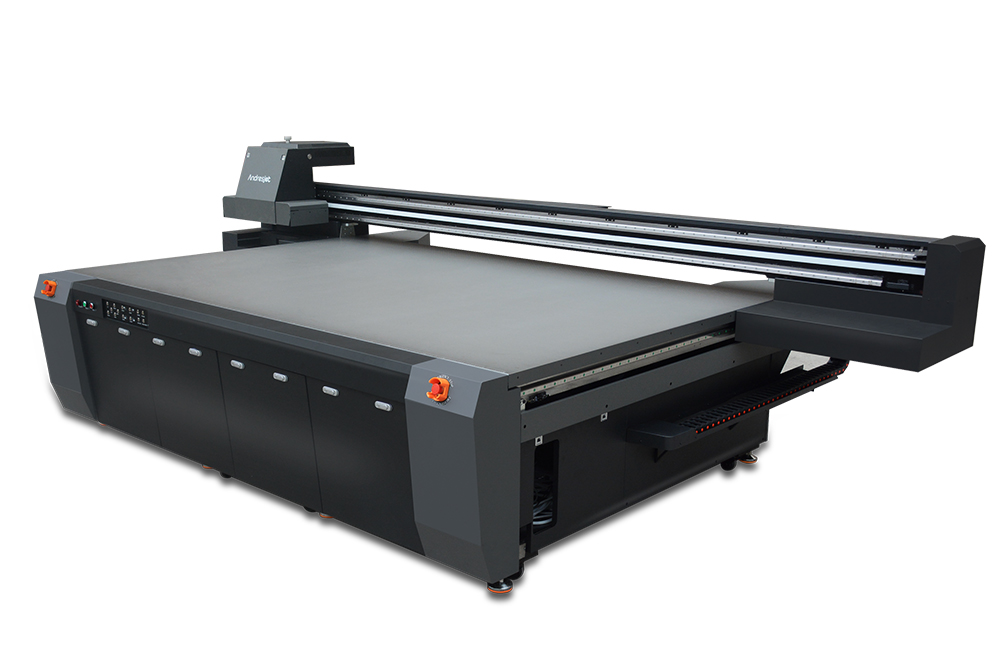UV Flatbed Printer: How to Maximize Print Speed Without Sacrificing Quality?
UV Flatbed Printer: How to Maximize Print Speed Without Sacrificing Quality?
In the realm of digital printing, UV flatbed printers have revolutionized the way surfaces are adorned with vibrant, high-resolution images. These versatile machines offer unparalleled flexibility, enabling printing on various materials such as glass, wood, metal, plastic, and more. However, one of the key challenges faced by users is striking a balance between maximizing print speed and maintaining optimal print quality. This article delves into the strategies and techniques that can help achieve this delicate equilibrium.

Understanding UV Flatbed Printer Technology
UV flatbed printers employ ultraviolet (UV) curing technology, which instantly dries the ink as it is exposed to UV light after being deposited onto the substrate. This process not only accelerates the printing process but also enhances durability and resistance to fading, scratching, and environmental factors. The printer’s flatbed design allows for easy loading and unloading of materials, accommodating both small and large items.
Key Factors Influencing Print Speed and Quality
Ink Quality and Type: The choice of ink significantly impacts both speed and quality. High-quality UV inks are formulated for rapid curing while maintaining color accuracy and adhesion properties.
Printer Resolution: Higher resolutions result in sharper images but can slow down the printing process. Finding the right resolution for your specific application is crucial.
Print Mode: Most UV flatbed printers offer different print modes, such as standard, high-speed, and high-quality modes. Selecting the appropriate mode based on the job requirements is essential.
Curing Process: Efficient UV curing is vital for fast turnaround times. Optimizing the intensity and duration of UV exposure can enhance speed without compromising quality.
Material Preparation: Proper cleaning and pretreatment of materials ensure better ink adhesion, reducing the need for multiple passes and improving overall efficiency.
Printer Maintenance: Regular maintenance, including cleaning printheads and keeping the machine calibrated, ensures consistent print quality and prevents slowdowns due to technical issues.
Strategies to Maximize Print Speed Without Sacrificing Quality
Optimize Ink and Print Settings
Choose inks specifically designed for UV flatbed printers, focusing on those that offer fast curing times and excellent color saturation.
Experiment with print settings to find the optimal balance between speed and quality. For instance, reducing the number of ink passes can speed up the process, while adjusting the dot gain can enhance image sharpness.
Utilize High-Speed Print Modes
Many UV flatbed printers come equipped with high-speed print modes that sacrifice minimal quality for significantly faster output. Use these modes for jobs where slight reductions in resolution or color depth are acceptable.
Efficient Curing Techniques
Invest in a printer with adjustable UV curing lamps. By increasing the intensity of the UV light, you can cure the ink more quickly, allowing for faster printing speeds.
Optimize the curing process by ensuring the UV lamps are properly maintained and replaced according to the manufacturer’s recommendations.
Efficient Material Handling
Prepare your materials in advance, ensuring they are clean, dry, and properly pretreated to facilitate quick and even ink application.
Use fixtures or jigs to hold materials securely in place, reducing the need for adjustments during the printing process.
Implement Efficient Workflows
Utilize print management software to streamline job queuing and reduce downtime between prints.
Train operators on best practices for loading and unloading materials, as well as troubleshooting common issues, to minimize delays.
Regular Maintenance and Calibration
Establish a regular maintenance schedule to keep your printer in optimal condition. This includes cleaning printheads, checking ink levels, and ensuring proper calibration.
Schedule professional maintenance services annually or as recommended by the manufacturer to prevent unexpected breakdowns and maintain print quality.
Leverage Advanced Printer Features
Explore advanced features such as variable dot printing, which can adjust ink deposition based on the material’s texture, further optimizing speed and quality.
Utilize printers with advanced color management systems that ensure consistent color output across different materials and print jobs.
Case Study: Success in Balancing Speed and Quality
A furniture manufacturer specializing in custom-designed wooden pieces faced challenges in meeting high demand while maintaining the quality of their UV-printed designs. By implementing several strategies outlined above, they achieved significant improvements:
They invested in a high-end UV flatbed printer with adjustable UV curing lamps and advanced color management.
Their production team was trained on efficient material preparation and handling techniques.
They optimized their print settings, using high-speed modes for less detailed designs and adjusting resolution and ink deposition for more intricate work.
Regular maintenance and calibration ensured consistent print quality and minimized downtime.
As a result, the manufacturer was able to increase their production capacity by 30% without sacrificing the quality of their prints, ultimately boosting customer satisfaction and expanding their market reach.
Conclusion
Maximizing print speed without compromising quality on a UV flatbed printer is an achievable goal through a combination of strategic planning, technological advancements, and efficient workflows. By understanding the key factors that influence both speed and quality, and implementing the strategies outlined in this article, businesses can enhance their productivity while maintaining the high standards of their printed outputs. Regular maintenance, operator training, and staying abreast of technological developments will further contribute to long-term success in this dynamic field.
